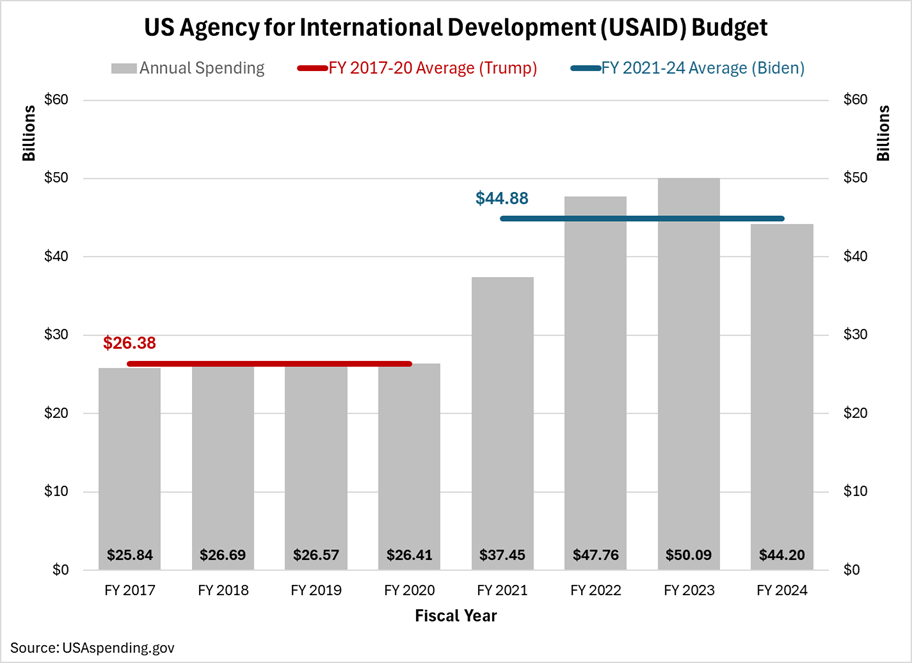What USAID Offers for Reducing the Deficit
The Biden-Harris administration left the fiscal situation of the U.S. government in a world of hurt. In January 2025, the Congressional Budget Office projected federal budget deficits will range between 5.5 and 6.5% of GDP during the next 10 years under current law.
These figures compare with an average budget deficit of 3.8% of GDP from 1975 through 2024. The Biden-Harris administration’s spending legacy is unsustainable.
As a wise man once said, “If something cannot go on forever, it will stop.” The incoming Trump administration has determined the federal government’s excessive spending needs to stop.
Fiscal Reform in the Works
President Trump’s new administration has started by focusing on the federal government’s discretionary spending in general, and with foreign aid in particular. Much of that foreign aid is disbursed through the U.S. Agency for International Development (USAID). I pulled its annual spending numbers for the last eight fiscal years. I also calculated the agency’s average annual spending during both the previous Trump and Biden administrations.
This chart shows USAID’s spending exploded during the Biden administration. On average, its spending rose 70%, from $26.38 billion per year during President Trump’s first term to an average of $44.88 trillion during President Biden’s term.
How Cutting USAID’s Budget Can Reduce the Deficit
There are two budget-cutting scenarios to consider here. The first would see this foreign aid spending fully eliminated, and the second would reduce it to the level it was during President Trump’s first term.
In Scenario 1, the U.S. government would save $44.88 billion per year. If that reduction is maintained over ten years, those savings would total $448.76 billion, or about 44.9% of $1 trillion. If the reduction is extended beyond ten years, the cumulative total saved would reach $1 trillion in 22.3 years.
In Scenario 2, the U.S. government would save $18.50 billion per year compared to the Biden administration’s spending. Over ten years, the cumulative savings would add up to almost $185 billion, which is 18.5% of $1 trillion. It would take 54.1 years for the cumulative savings to total $1 trillion.
It’s very likely the Trump administration will settle on a policy that looks more like the second scenario than the first. While it will have completely eliminated USAID, with the State Department taking over its function, foreign aid will resume at a lower level, preferably with far less of the waste, fraud, and abuses that characterize USAID’s fiscal history.
Not Too Small to Cut
A common refrain about foreign aid spending is that it represents a very small part of the U.S. government’s total outlays each year. It’s “pennies on the dollar“ and, therefore, too little to bother with, say, those with a stake in the status quo. That’s a very poor argument in favor of keeping this spending at such an elevated level. It is far better for everyone for it to be put on a more sustainable fiscal footing sooner rather than later.






